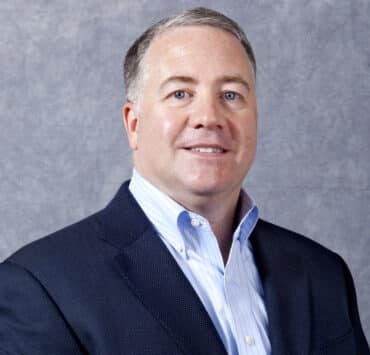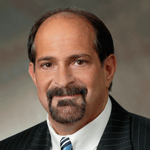
Frontier Communications
Chairman & CEO
Location: Stamford, CT
Years in position: 8
Career advice: “Take calculated risks. At the end of the day, it is not about staying in your comfort zone, it is about pushing yourself and getting outside of that comfort zone. Do things differently and be a catalyst for change.”
Maggie Wilderotter has spent a lot of time in rural America. At first glance she may seem out of place, having cut her teeth in Silicon Valley and at some of the country’s biggest names in high technology. The woman who was once senior vice president of McCaw Cellular Communications, president of national operations for AT&T Wireless Services, CEO of Wink Communications, and senior vice president of business strategy at Microsoft was not wanting for work when the board of Citizens Communications approached her to lead what is now Frontier Communications—“It’s not that I didn’t have other opportunities, and frankly, not that I don’t still,” she says wryly—but the chance to again be a CEO in the industry she loved was an offer she couldn’t pass up.
As chairman and CEO of Frontier, Wilderotter uses her company’s communications products and services to help rural America survive and thrive, especially in challenging economic times. Caught on the margin of forgotten and taken for granted, the America that “the grid” missed is a place many simultaneously evaluate as too small to accommodate, yet “sufficient” when compared to the more primitive corners of the world. When Wilderotter took Frontier’s reins in 2004, she saw in it what others overlooked: market opportunity.
While 15–20 percent of Frontier customers dwell in suburbs and urban environments such as Rochester, New York, two-thirds of its business comes from small and medium enterprises. Creating a system to support where those customers live and operate is a journey, one which, by Wilderotter’s calculation, Frontier has about 75 percent completed.
America’s developing markets constitute a sizeable population of 25–30 million people without broadband connectivity. Frontier has risen to meet that need, nearly tripling in size in the last three years due to a major territory acquisition from Verizon Communications, in 2010, and the FCC’s support of broadband deployment in rural communities. Broadband is now available to 318,000 households in new territories, and legacy-market connectivity has increased 25 percent. “A lot of goodness happens in rural America every day,” Wilderotter says. By providing those markets with the infrastructure, connectivity, and support enjoyed without question by the country’s urban centers, Frontier is promoting rural America’s viability as a place of business for entrepreneurs and uncompromised living for its residents.
Frontier is focused on communications, which Wilderotter says provides the opportunity to focus on execution and constant improvement of what it does well: telecom, data, and Internet. Operating in 27 states, the company currently offers broadband to 85 percent of its customers with the goal of surpassing 90 percent in 2014. Such statistics speak to the company’s success, making it the largest communications company focused on serving rural areas and small- and medium-sized towns and cities, according to Frontier’s annual 10-K report to the SEC. However, Frontier was once a company that had lost its way.
When Wilderotter made the decision to join Frontier, the opportunity presented less than certain prospects of success. The Frontier family received her fresh off a failed attempt by the previous management team to sell the struggling company. At the time, Frontier’s problems were exacerbated by a few excesses: the company operated a corporate jet complete with flight staff and hangar out of the Westchester County Airport, and had a chef and physician on site at its Stamford, Connecticut, headquarters.
Within her first six months, Wilderotter set the tone of her tenure. She sold the jet, terminated the chef and the doctor, and began a market-by-market tour wherein she met 85 percent of the Frontier workforce, notable community leaders, and major customers. Technology is an inherently risky business, and Wilderotter made it clear she had skin in the game on her and her company’s behalf. Her first executive orders at Frontier were informed by her most valuable asset: the experience of taking decisive action to make significant gains.
In 2004, Wilderotter began giving regional and local teams ever-increasing authority to make business-critical decisions without exhaustive reviews by corporate. On her acclimation tours of the company’s legacy markets, Wilderotter could see that her employees are also friends, neighbors, and relatives of her customers. And “to leverage our secret sauce,” as Wilderotter calls the hyper-local presence, she gave her general managers in places like Cookeville, Tennessee, and Kearney, Nebraska, the autonomy to challenge competitors.
When Frontier excelled in simplicity, predictability, and unmatched customer service, the company learned it could buy time as connectivity speeds and infrastructure developed. Today, 40 percent of the households in Frontier territory have access to speeds greater than 20 megabits per second (Mbps)—but for 80 percent of its customers, 6 Mbps works just fine. And in those locations where mountainous or extremely rugged terrain makes high-speed Internet too expensive, Frontier offers satellite broadband.
New markets, such as those found in the Verizon acquisition, provided their own challenges: Frontier had to contend with neglected infrastructure, poor customer relationships, and often no broadband access—not to mention completely different systems—across a sizeable 14-state footprint. With the help of engineering and IT, Frontier’s sales teams have made great strides in the new markets. Thanks in part to Frontier’s focus on broadband deployment, data revenues have made up for the company’s losses in voice. “We were coming in late to the party,” Wilderotter says. “The first two years were about building the network, then it became all about win-back.”
As part of the acquisition, Verizon maintained much of the enterprise clientele within the territory. And while some criticized the deal as a misstep for Frontier, president and COO Daniel McCarthy told listeners at the 2013 Goldman Sachs Communacopia Conference that Frontier is winning more medium-sized businesses every day, and the small-business segment has provided the largest opportunity for growth.
Where the Comcasts and Time Warners of the industry sacrificed rural- and small-market customer experience in pursuit of big urban clients, Wilderotter seized the opportunity to position Frontier as the just-right solution for the hostages of the cable-only market. During her field visits, the company learned that “75 percent of cable consumers in [the Verizon service area] don’t like their service,” Wilderotter said at the Communacopia conference. “And 50 percent would leave for the right offer.”
Wilderotter describes that winning offer as one that “takes the angst out of data and voice.” Frontier began offering no-contract, fee-free packages to residential customers at a flat rate in 2006, and customers responded. In each of the first two quarters of 2013, Frontier added more broadband Internet customers than the entire year of 2012. It sweetened the deal last July for small businesses, too, which have signed on to the no-contract package at such a rate that they now make up 20 percent of Frontier’s total revenue.
Frontier’s newest converts didn’t tell Wilderotter that bundling her services and offering them for $19.99 a month was the secret to their business, but, as the CEO puts it, “I’ve learned that you start with, ‘If you build it, they will come.’ And if they’re not coming, you better find out why.” Sitting on the board of Procter & Gamble has been a blessing for Wilderotter, who says the company’s unmatched customer insights clued her into the value of customer feedback for those willing to listen.
Though Wilderotter has her ear to the ground, the strategies born of those rural rumblings are not always obviously prudent. She joked in an interview with Telephony magazine that, in 2007, when she decided to give away 30,000 personal computers to new and existing broadband customers, she had to “peel [her chief financial officer] off of the ceiling.” Her rationale came again from prior experience. In the early days of wireless, Wilderotter found that it was the hardware, not the cost of the service, which was an impediment to adoption. Similarly, in rural America, many households in Wilderotter’s territory simply couldn’t afford computers. As she remarked in the interview, “It’s hard for me to sell broadband to someone who doesn’t have a PC. I’m good, but not that good.”
The promotion followed the model of those employed by other providers to bring in new customers, but Wilderotter says the differentiating factor is her refusal then and now to show a lack of respect for existing customers. “Our philosophy is not to do anything for new customers that we’re not willing to do for existing customers,” she says. “We’ve created an environment for our employees to put the customer first, and modeling that behavior as CEO is important.”
With stability in consecutive quarters in 2013, Wilderotter is now looking beyond Frontier’s traditional channels. “We have a competency in partnerships,” she says. “In our industry, there is often a mind-set of ‘Do it yourself’ and ‘If you didn’t invent it, it doesn’t matter.’ For us, if partnerships deliver value to our customers, I believe we should do it.” Four years ago, 85–90 percent of Frontier’s sales came through its own channels by way of feet on the street or call center salesmanship. Now, 33 percent of new clients find Frontier through partners such as Intuit, whose QuickBook software Frontier technicians support.
Living in the land of the free is about choice. When Wilderotter decided to lead Frontier almost a decade ago, she signed on to take her career to new heights and to improve the quality of life for more than 20 million customers through communications. For her, rural Americans shouldn’t have to choose between seeing the stars in the sky and streaming stars on Netflix; rather, she argued, their coexistence should be a given. Some may look at rural America and see it as a place of sacrifice by definition, but in Wilderotter’s estimation, that oversight means one thing: opportunity.

